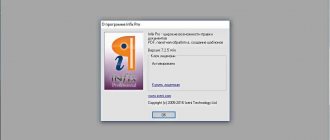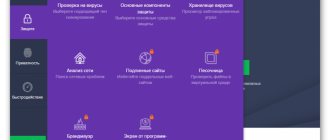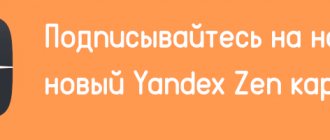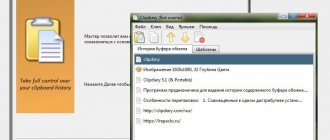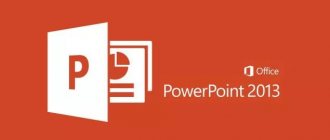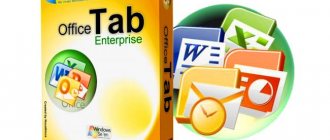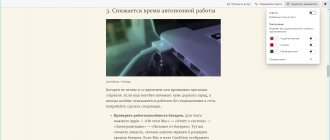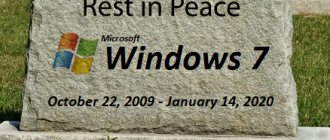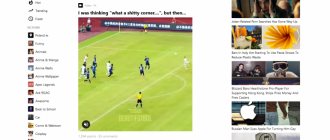For many people, a phone's camera is one of the most important aspects when choosing a gadget. At the same time, the functionality of the camera is not at all limited to “clicking” photos and recording videos. The smartphone camera has many uses, from the ability to work with augmented reality to object recognition. Moreover, the algorithms of modern applications are so advanced that they can recognize anything.
The future has already arrived. Your smartphone can recognize everything around you
Google Lens. Program to recognize everything
Google Lens works thanks to advanced computer vision technology, which allows it to recognize a huge range of different objects. Google Lens distinguishes between animal breeds, plants, flowers, gadgets from different manufacturers, and much more. In addition, for some items, Google Lens will also provide purchase links where possible. It’s clear that no one will offer you to buy a cat. But why not buy home a cute table that you saw in a cafe?
Download: Google Lens
Purchasing a 1C program: from a franchisee or from a 1C company
The 1C company itself does not sell its solutions, distributing its products and services through certified partners - 1C-Franchisee companies. They also provide support, implementation, modifications and maintenance of software products.
An important point in 1C’s policy regarding software prices - partners do not have the right to give discounts on software products! That is why when choosing a 1C program, focusing on the best prices will not work.
This approach has its own logic, since it greatly simplifies the choice, for example, of the Basic version of any 1C program, when everything is decided by the speed and quality of the selected 1C partner’s response to a client’s request. If you are not satisfied with these points, you can contact anyone else, and this will not affect the price in any way. This saves customers from the fact that incompetent companies will not be able to lure customers with bargain prices, forcing them to accept a low level of service quality.
The highest quality provided by the partner, strict pricing policy on the part of 1C. After all, if the client is not satisfied, he will simply move to another partner. For example, our company undergoes regular certification for compliance of its quality management system with the international standard ISO 9001, and also strives to obtain a maximum of 1C partner statuses to confirm the highest quality of our customer service.
Fig.7 High level of services is the main task of the partner
Pinterest. For designers and more
Pinterest has a visual search tool, but it's based on slightly different algorithms. The application is primarily designed to search for paintings, interior items and other things that may be useful to designers and artists. Like Google Lens, Pinterest allows you to get a link to purchase the item you want, if possible. Plus, the app's advanced social features will help you ask the community for help if the algorithms don't give you the results you want.
Download: Pinterest
Educational program
- EDUCATIONAL PROGRAM
ADDITIONAL EDUCATION OF CHILDREN
An educational program is a document regulating the type and methods of constructing the content of the educational process in the conditions of a particular pedagogical system.
The educational program determines the theoretical foundations, directions of activity of the children's association, organizational and methodological features of the educational process, as well as its conditions and results.
Modern additional educational programs of the new generation are developed in line with personality-oriented and competency-based approaches, creating conditions for independent self-determination of the individual, the development of his social competence and civic responsibility.
Distinctive features of the new generation program:
- New personal and professional attitudes of the teacher in relation to the student as a subject of the educational process and to himself as a participant in the dialogue - both a leader and an equal.
- The use of developing technologies and methods of educational activities.
- Orientation towards a broad humanitarian education, allowing for a harmonious combination of national and universal values.
- The result of education is the student’s key competencies, expressed in the formula: “I want, I can, I act.”
Program development is one of the most important conditions and one of the means of implementing the educational process. Therefore, when starting to develop a program, the teacher must clearly understand the purpose, structure and content of this document; only then will he be able to structure his work competently and optimally.
Regulatory aspect.
In accordance with Article 9 of the Law of the Russian Federation “On Education” (hereinafter referred to as the Law), the educational program determines the content of education of a certain level and focus. Additional educational programs include educational programs of various directions, implemented: in general educational institutions and educational institutions of vocational education outside the main educational programs that determine their status; in educational institutions for additional education of children, where they are the main ones.
Contents of additional educational programs.
Paragraph 5 of Article 14 of the Law establishes that the content of education in a particular educational institution is determined by the educational program (educational programs) developed, adopted and implemented by this educational institution independently.
The content of education is one of the factors of economic and social progress of society and should be focused on:
- ensuring the self-determination of the individual, creating conditions for his self-realization;
- formation in the student of a picture of the world that is adequate to the modern level of knowledge and the level of the educational program (level of study);
- integration of the individual into national and world culture;
- the formation of a person and citizen integrated into his contemporary society and aimed at improving this society;
- reproduction and development of the human resources potential of society.
Responsibility for the implementation of educational programs not in full in accordance with the curriculum and schedule of the educational process, the quality of education of its graduates lies with the educational institution in the manner established by the legislation of the Russian Federation, in accordance with paragraph 3 of Article 32 of the Law.
The goals and objectives of additional educational programs, first of all, are to ensure the training, education, and development of children.
In this regard, the content of additional educational programs must comply with:
- achievements of world culture, Russian traditions, cultural and national characteristics of the regions;
- the appropriate level of education (preschool, primary general, basic general, secondary (complete) general education);
- areas of additional educational programs (scientific and technical, sports and technical, artistic, physical education and sports, tourism and local history, environmental and biological, military-patriotic, socio-pedagogical, socio-economic, natural science);
- modern educational technologies, reflected:
- in the principles of learning (individuality, accessibility, continuity, effectiveness);
- forms and methods of training (active methods of distance learning, differentiated training, classes, competitions, competitions, excursions, hikes, etc.);
- methods of control and management of the educational process (analysis of the results of children’s activities);
- teaching aids (list of necessary equipment, tools and materials per each student in the association).
Main qualitative characteristics of educational programs:
- relevance – the ability of a program to meet the needs of today’s level of social life with a focus on effectively solving problems in the future;
- predictiveness – the property of a program to reflect in its goals and planned actions not only today’s educational needs, but also future ones;
- rationality - is determined by the choice of such goals and methods of achieving them, which in the specific conditions of the region, based on available resources, allow obtaining the most useful result;
- realism - expressed in establishing the correspondence of the goal to the proposed means of achieving it;
- integrity – the completeness and consistency of the construction of all its structural components, which determines the consistency and consistency of actions to achieve goals;
- controllability - the program not only defines the expected results, but also offers parameters and methods for checking both final and intermediate results;
- adjustability is a property of a program that allows you to promptly detect deviations and failures in its implementation, quickly respond to them and, by changing some details, particular aspects, rearranging sections, varying the methodology, achieve the expected results.
The program of additional education for children, as a rule, includes the following structural elements:
- title page.
- explanatory note.
- educational and thematic plan.
- content of the course being studied.
- methodological support for additional educational programs.
- bibliography.
Title page includes:
- full name of the educational institution in accordance with the Charter of the Educational Institution;
- details for the approval of the program at a meeting of the collegial body (pedagogical council or methodological council with expert rights), as well as details of the establishment of the program as a valid regulatory document (the Program is considered accepted for work, approved from the moment it is signed by the director, confirmed by the seal);
- name of the additional educational program;
- the age of the children for whom the additional educational program is designed;
- implementation period of the additional educational program;
- FULL NAME. the author (authors) of the additional educational program, the position held in the educational institution;
- name of the city, locality;
- a year of development of an additional educational program.
The numbering of text pages begins with 2 (or 3-4), but only with the one on which the actual text of the work begins. The number of the text page is written without dots or dashes.
Table of contents or contents.
The program section “Table of Contents” or “Contents” may be absent in a small program, either annual or designed for several years. The need for such a section arises only when there are a large number of sections or parts. For example, if the program is designed for 3-5 years, for ease of use it is necessary to enter a table of contents with links to page numbers.
Explanatory note (first section of the program).
This section of the program may be called an Explanatory Note or an Explanatory Note, at the discretion of the author. This is not of fundamental importance. However, the difference depends on the duration of the program.
A one-year program is more specific than a two-year program, etc. years. In a long program, the Explanatory Note becomes more voluminous. For clearer placement of information, this section can be divided into two sections: Introduction and Explanatory Note.
In the Introduction, it is necessary to present those basic conceptual approaches of the teacher to working with children, which will be described in detail in the following sections of the program:
(Concept: 1. a system of views, a particular understanding of phenomena and processes; 2. a single defining plan, the leading thought of a work, scientific work, etc.).
The program should start with a little pedagogical rationale:
- the direction of the additional educational program;
- definitions of this type of activity in the culture of society, its significance for the development of the child’s personality;
- the existing situation, access to social reality and the needs of the child;
- novelty, relevance (for the country, a specific region or institution), pedagogical expediency;
- distinctive features of this additional educational program from others similar to it or related to it in the profile of activity;
- main leading pedagogical ideas (scientific - on the subject of knowledge, general pedagogical, social and others, revealing the scientific and methodological position of the author).
The introduction (concept) and explanatory note should not duplicate each other. The text of the concept is written in free form and, for the most part, contains the main pedagogical and technological ideas of the program.
The Explanatory Note itself contains information related to a specific program:
- goals and objectives of the program for all years of its implementation (if it is long-term), as well as goals determined for each year of activity separately;
- a brief description of the age and individual characteristics of the group of children participating in the implementation of this additional educational program;
- timing of the implementation of the additional educational program (duration of the educational process, stages);
- a brief description of methods that ensure, from the author’s point of view, children’s conscious and lasting assimilation of the material, nurturing and developing the skills of their creative activity, the ability to record and generalize observation and research materials;
- a brief description of various forms of work with children (excursions, hikes, practical and laboratory classes, public events, etc.), which enable children to maximize their activity and creativity, and also develop their emotional perception;
- expected (predicted) results and methods for testing them (what students will know and be able to do, where they can continue their studies in the association’s profile, what personality traits can be developed in children as a result of classes and how this is determined).
The curriculum (second section of the program) includes:
- list of sections, topics;
- number of hours on each topic, broken down into theoretical and practical classes.
It is drawn up for each year of study and is presented in a table:
| No. | Subject | Number of hours | Notes |
| Total | Theoretical classes | Practical classes | |
| Total hours: |
The curriculum should reflect the characteristics of each year of study and each specific group. At the bottom of the table, the number of hours is summarized in the columns: “Total”, “Theoretical classes”, “Practical classes”. The total number of hours per year depends on the number of hours of classes per week.
There is a traditional calculation of hours:
The content of the additional educational program (third section of the program) reveals:
- the content of the additional educational program is revealed through a full description of the topics (theory and practice) indicating all the main issues in both the theoretical and practical parts of the program. At the same time, the theory indicates the basic theoretical concepts, and the practice indicates the practical activities of students. (When planning an excursion, it is advisable to indicate the name of the location of the excursion and, if possible, disclose its contents).
Conditions for the implementation of the program (the fourth section of the program) include:
- material support for the program - a list of necessary equipment, for example: mirrors, instruments, musical instruments, scenery, costumes, machines, microphones, other technical teaching aids (TSO), etc.; description of the classroom;
- methodological support for the program
description
- forms of classes planned for each topic or section (game, conversation, hike, excursion, competition, conference, etc.);
- techniques and methods for organizing the educational process, didactic material, technical equipment for classes;
- summarizing forms for each topic or section.
- program staffing. The staffing of the program must be prescribed if several specialists are needed for the work of the children's association. For example: accompanist, arranger, artist, etc.
Bibliography:
- list of literature used in compiling this program (recommended for teachers);
- a list of literature recommended for children and parents to help them master the program.
These lists are compiled in the following form: surname, initials of the author; Name; place of publication, publishing house; the year of publishing.
Applications to the program:
- dictionary of special terms with explanations;
- Control questions;
- finished products, samples;
- listening conditions;
- description of classes;
- technological maps;
- testing materials;
- conditions of choice and team;
- reminders for parents, etc.
The author of an educational program can change the order of the sections of the structure, starting with the conditions for implementing the program.
Coinoscope. Search for coins
Yes, the program can be called a very highly specialized application for numismatists, because it is aimed only at a certain category of objects, namely, coins. The program can recognize both modern and ancient coins. However, in addition to these features, Coinoscope is also a real archive with descriptions of coins from different eras. A small tutorial for novice collectors or just antique lovers.
Download: Coinoscope
1C:Fresh, Arenda 1C and other cloud solutions 1C
Many articles have been written about cloud technologies, they have as many fans as opponents, their main advantage is that you don’t need anything other than the Internet to work with the program in the cloud, but for many it is offset by the main disadvantage - your data is “somewhere” and beyond access to them must be paid regularly. But in any case, the development of clouds continues, and 1C remains true to its approach in this area, developing cloud services for users with very different needs.
The 1C:Fresh service (the official name is 1C:Enterprise via the Internet with the website “1cfresh”) is one of the first 1C cloud developments, based on the company’s servers. To start working in the service, the user needs to register by simply indicating his full name, phone number and e-mail. A list of technical requirements, installing updates, backups or restrictions on time and place of access - none of this worries 1cfresh users. Data in user databases is securely protected and available 24/7 in the current version.
The service supports most of the most popular 1C programs, as well as complex solutions, but still the bulk of service users are individual entrepreneurs, as well as representatives of small and medium-sized enterprises.
For large enterprises, 1C offers server hosting and, together with Yandex.Cloud, the deployment of a full-fledged cloud infrastructure using Yandex facilities. Here we are no longer talking about renting a certain configuration. Such cloud hosting can become either a full-fledged replacement for the enterprise’s local information system, or a safety or relief option in case of force majeure.
Fig.3 1C:Fresh
PlantNet. Plant Directory
PlantNet, as the name suggests, identifies different types of plants, including flowers, herbs, cacti, trees and more. Beyond the name of the plant, PlantNet lets you know the details and facts about what you've discovered. If you want, explore the application library yourself. It includes more than 20,000 species of the most diverse flora.
Download: PlantNet
Vivino. For lovers of good wine
Vivino is an application that will help you buy the best quality wine. All you have to do is take a photo of the bottle label. After this, the program will process it and provide you with all the necessary information. In addition to the drink's overall rating, Vivino will show consumer reviews and even the average price in your area. At the moment, the application “knows” about 9.2 million types of wines. How many types of wines do you know? Tell us about it in our Telegram chat.
Download: Vivino
Typical and non-standard configurations
At the time of purchase, any 1C configuration (the same as a program, solution, system, software product, etc.) is standard.
They try to preserve it in this form, since it is not necessary to involve an IT specialist to update the standard configuration when a new release with additions and corrections is released. When the database is connected to the Internet, updates can even be installed automatically. This is very important for programs that maintain regulated accounting (for example, the “whole family” of 1C: Accounting programs), since their updates reflect innovations in legislation, and skipping such points in tax and accounting is, to put it mildly, undesirable.
Food Camera. Calorie counter
Food Camera tries to help you in two ways at once: keep track of the number of calories you consume, and save you from having to enter everything manually. Food Camera comes with an AI-powered personal assistant that works in conjunction with your camera. You just need to point your device’s camera at food, and the application will give you information about calorie and energy value. Works on drinks too. All the necessary information is recorded in a nutrition log so that you can track your progress.
Download: Food Camera
1C update and maintenance
The 1C program can easily be imagined as a living organism that develops in accordance with the requirements of the “outside world” - changes in legislation, growth in technology and market requirements.
Fig.9 Comprehensive support for 1C users
To ensure adequate performance of local 1C programs throughout their entire life cycle, that is, their continuous development, 1C has developed standard support packages at a fixed price (free for Basic versions) under the 1C:ITS agreement.
1C:ITS will provide support for the basic operation of your 1C program. The agreement makes it possible to receive updates and current information about changes in legislation with the display of these changes in the 1C program, send reports directly from 1C, use legally significant EDI and a number of services for setting up and verifying counterparties and their TIN. The volume of 1C services and the cost of the 1C:ITS contract itself is determined by the tariff plan and user tasks.
1C partners and our company in particular, in addition to the basic 1C:ITS packages, offer additional support options developed taking into account the short-term and long-term development goals of our customers’ IT structures. We provide both one-time services of any complexity and transfer our customers’ systems to regular subscription services.



